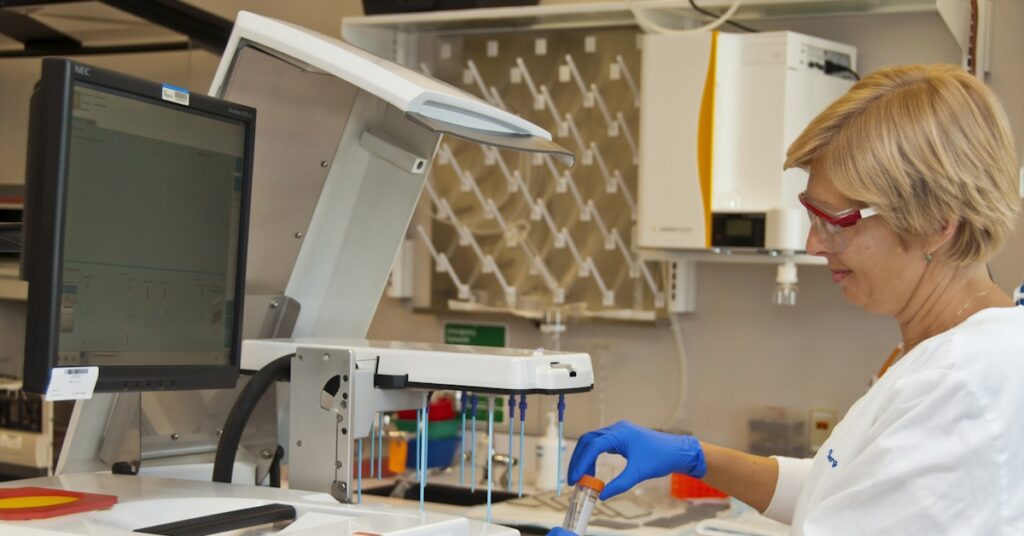Are your design ideas getting lost?
Trying to explain abstract concepts without a clear visual guide often leads to confusion. This disconnect can derail projects before they even start.
The real problem is misaligned expectations lead to costly revisions. This wastes valuable time and strains relationships with your clients and team members.
A great user experience is critical for success. According to llcbuddy.com, 47% of visitors expect pages to load in under two seconds. Planning for performance starts with your initial design structure.
If you’re also looking into software solutions, my article on best application integration tools covers how to connect systems easily.
The right tool helps you create clear, collaborative designs from the start, ensuring everyone is on the same page and focused on the end-user.
In this guide, I’m going to review the best wireframe tools available. I’ll help you find a solution that streamlines your workflow and makes design handoffs smooth.
You’ll discover platforms that make it easy to build professional mockups, get quick feedback, and deliver exceptional user experiences on time.
Let’s get started.
Quick Summary:
| # | Software | Rating | Best For |
|---|---|---|---|
| 1 | Figma → | UX designers & product teams | |
| 2 | Balsamiq → | Product managers & web developers | |
| 3 | UXPin → | Enterprise design & dev teams | |
| 4 | Miro → | Product & UX design teams | |
| 5 | Justinmind → | Cross-functional design teams |
1. Figma
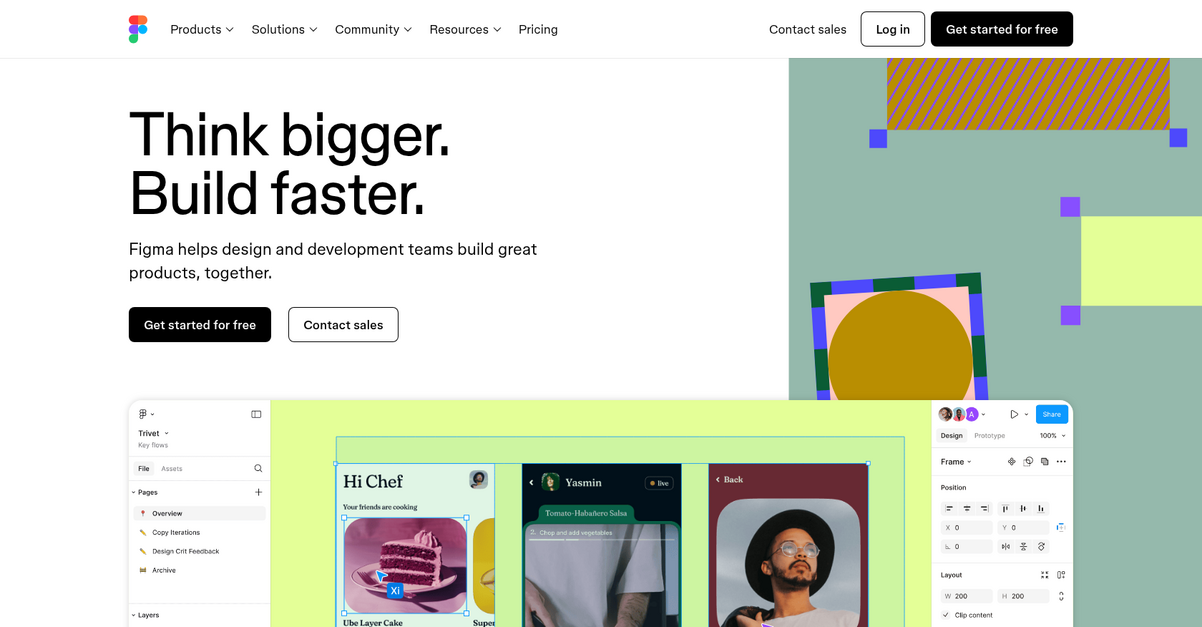
Struggling to translate ideas into clear, collaborative designs?
Figma Design offers a unified space to design and prototype, streamlining your initial concept development.
This integration simplifies the early stages of project work, helping you avoid fragmented workflows and ensure all stakeholders are aligned from the start.
How can you build faster, together?
Figma brings design and development teams into one shared file, fostering seamless communication. This creates a central source of truth for all project collaborators, including designers, developers, and even clients.
You can design consistent UIs with Auto Layout and scale your edits instantly by batch editing multiple frames. The new AI features instantly create mockups and prototypes, accelerating your testing processes, while Dev Mode offers a dedicated space for developers to translate designs into code.
It helps you redesign how you approach design and build better products together.
Before diving deeper, you might find my analysis of best marketing analytics tools helpful.
Key features:
- Design and prototype in one place: This centralizes your workflow, allowing you to quickly move from wireframes to high-fidelity prototypes without switching tools.
- Collaborate with FigJam: An online whiteboard that supports brainstorming, strategic planning, and team meetings, ensuring everyone is on the same page.
- Dev Mode for design-to-code: Translate designs into code with a dedicated workflow, including Focus View and design statuses for efficient handoff and tracking.
Learn more about Figma features, pricing, & alternatives →
Verdict: For UX designers, product managers, and web developers seeking a unified platform, Figma is one of the best wireframe tools available. Its collaborative environment, integrated design-to-prototype capabilities, and developer handoff features simplify complex workflows, making it ideal for creating clear, professional, and easily communicable designs.
2. Balsamiq
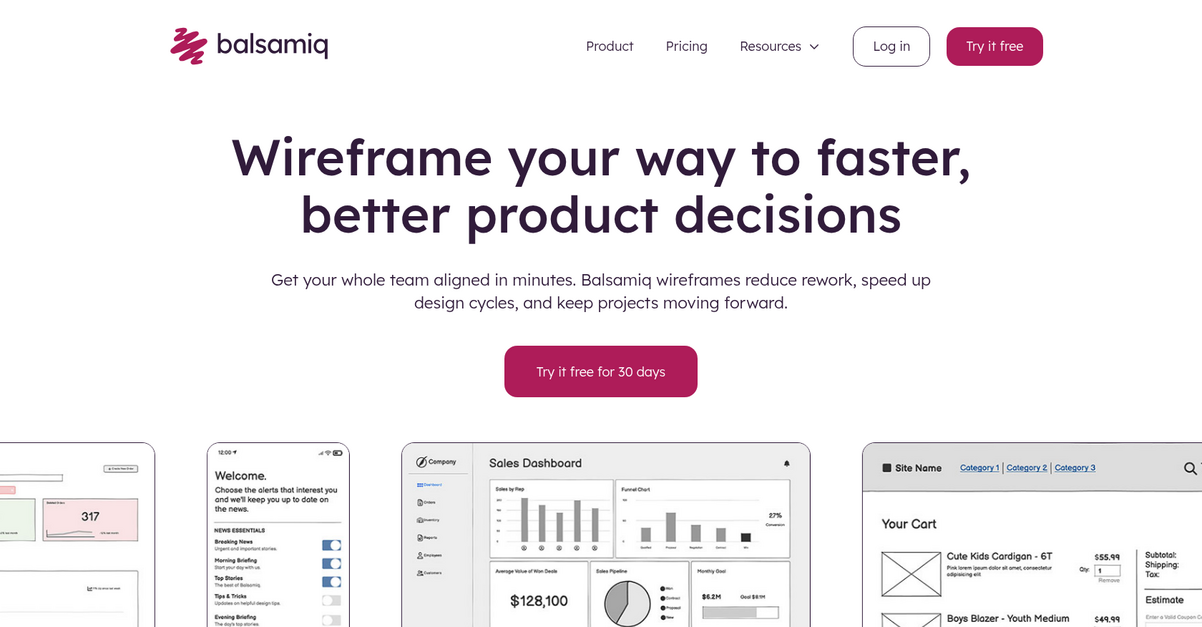
Tired of design roadblocks and endless revisions?
Balsamiq helps you rapidly create quick wireframes using simple drag-and-drop UI components.
You can quickly translate abstract ideas into tangible designs that truly align your entire team. This reduces rework and speeds up your design cycles.
It’s time to move projects forward!
Balsamiq streamlines your workflow, eliminating the hassle of lengthy requirements documents. You can easily share your work by sending a link or exporting wireframes. This ensures everyone understands your vision.
Its low-fidelity design keeps conversations focused on flow and function, preventing premature debates about colors or pixels. This means you avoid wasted meeting or build time. Plus, you can make quick adjustments and dive straight into building, ensuring your best product ideas don’t get lost in translation.
Balsamiq simplifies visual communication, acting as a shared language that eliminates guesswork often found in other documents.
A clear path to product decisions awaits.
Before diving deeper, you might find my analysis of API security testing tools helpful.
Key features:
- Rapid Wireframe Creation: Drag and drop pre-built UI components or customize them to get ideas down in minutes, eliminating steep learning curves.
- Seamless Collaboration & Feedback: Easily share wireframes via links or exports, facilitating clear communication and quick alignment with all stakeholders.
- Focus on Functionality: Low-fidelity design prioritizes flow and user experience, avoiding distractions and enabling quick tweaks for iterative progress.
Learn more about Balsamiq features, pricing, & alternatives →
Verdict: Balsamiq helps product managers, UX designers, and web developers create clear, collaborative designs. Its intuitive drag-and-drop interface, focus on low-fidelity wireframes, and strong collaboration features make it one of the best wireframe tools for aligning teams and accelerating product decisions.
3. UXPin
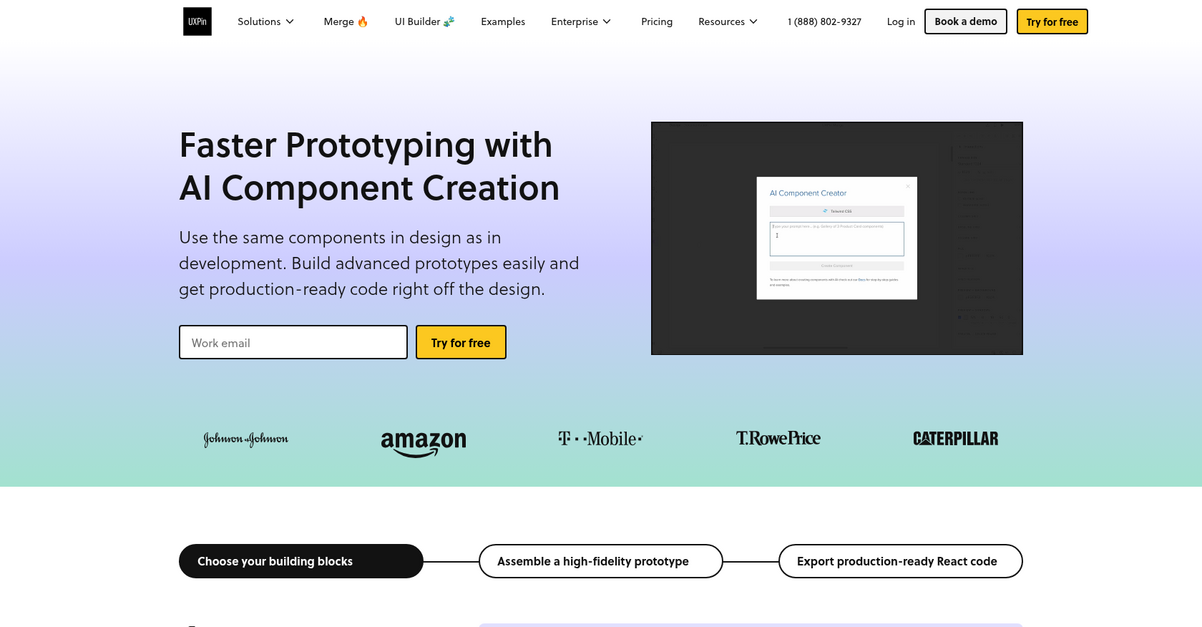
Tired of design handoffs breaking down?
UXPin helps you bridge the gap between design and development by enabling you to build UI with code-backed components.
This means you can use the same components in design as in development, ensuring consistency and streamlining your workflow from concept to code.
Ready to ship products faster?
UXPin empowers you to create fully functional, high-fidelity prototypes that behave like the end product, complete with advanced interactions and conditional logic.
You can also leverage built-in coded libraries like MUI or Tailwind UI, or integrate your own Git component repository, making it easy to assemble custom designs and export production-ready React code. Plus, with AI Component Creator, you can auto-generate layouts from prompts, saving valuable time and increasing productivity, quality, and consistency across your projects.
Simplify your design-to-development process.
While we’re discussing design tools, understanding best interior design tools is equally important for different design needs.
Key features:
- Code-backed components: Design with the exact same components developers use, ensuring consistency and eliminating inconsistencies from design to development.
- Advanced prototyping capabilities: Build fully interactive prototypes with variables, conditional logic, and realistic behaviors that truly mimic the final product.
- Production-ready code export: Generate clean, maintainable React code and design specs directly from your designs, accelerating the handoff process significantly.
Learn more about UXPin features, pricing, & alternatives →
Verdict: UXPin stands out as one of the best wireframe tools because it lets you design with code-backed components, which clients like T.RowePrice say saves months on timelines and reduces engineering time by around 50%, making your design process incredibly efficient.
4. Miro
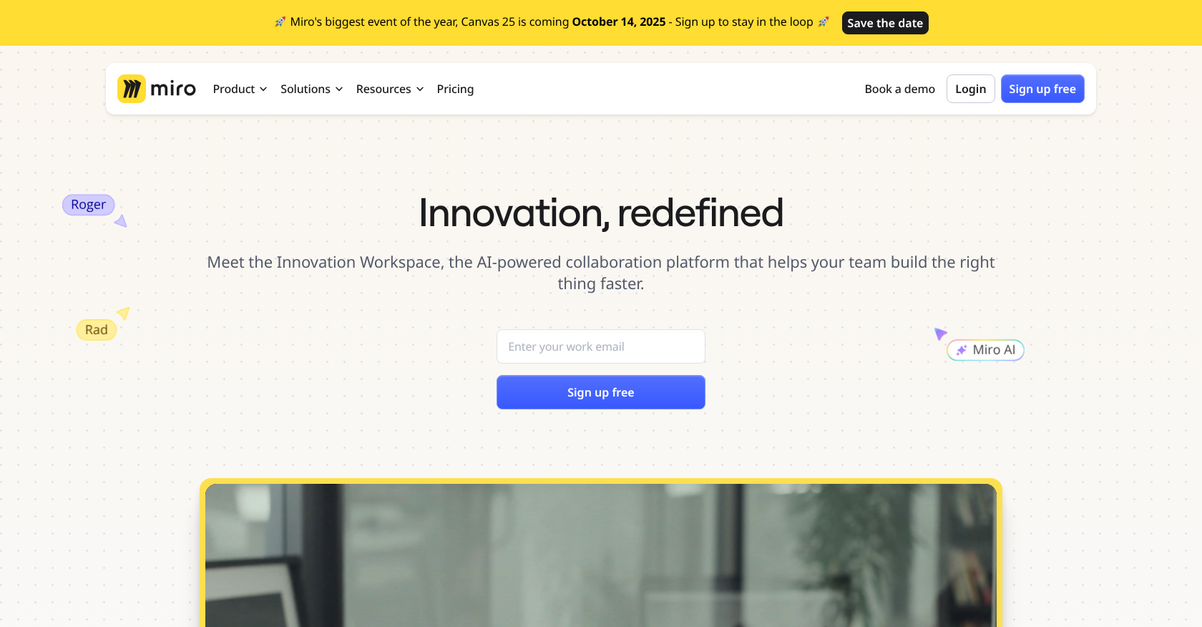
Struggling to translate abstract ideas into tangible designs?
Miro’s intelligent, limitless canvas allows your team to create and build together, turning initial concepts into clear, collaborative designs. This eliminates the headache of disparate tools and communication breakdowns.
You’ll find it effortless to power through any project with step-by-step templates, transforming messy brainstorms into polished, professional outputs that stakeholders can easily understand. This means less wasted time and fewer costly revisions.
It’s time to accelerate your design work.
Miro helps you deliver customer value faster by providing a single platform for your product and UX design teams. You can sketch wireframes, build interactive prototypes, and run design workshops with key partners, no matter where they are.
You’ll also discover distraction-free formats like docs and data tables, ensuring your creative flow remains uninterrupted and allowing you to get to work even faster. Miro’s AI capabilities further boost productivity, automating summaries and transforming brainstorms into crisp project briefs in seconds. Plus, you can bring your favorite planning and productivity tools from Microsoft, Google, and Atlassian directly into Miro, turning solo work into multiplayer action.
This makes collaboration engaging and effortless.
Before diving deeper, you might find my analysis of best pool design software helpful.
Key features:
- Limitless Canvas and Custom Templates: Provides an expansive workspace and customizable templates to transform abstract ideas into well-structured, professional wireframes and prototypes.
- AI-Powered Automation and Integration: Accelerates workflows by automating mundane tasks and seamlessly integrating with popular planning and productivity tools for enhanced team collaboration.
- Real-time Collaboration and Communication: Enables engaging, simultaneous teamwork through features like live calls, Talktracks, and interactive tools for effective feedback and idea sharing.
Learn more about Miro features, pricing, & alternatives →
Verdict: Miro excels as one of the best wireframe tools because its intelligent canvas and collaborative features directly address the pain points of UX designers and product managers. Its customizable templates, AI capabilities, and extensive integrations streamline workflow, enabling teams to create professional, collaborative designs that accelerate project delivery and ensure clarity.
5. Justinmind
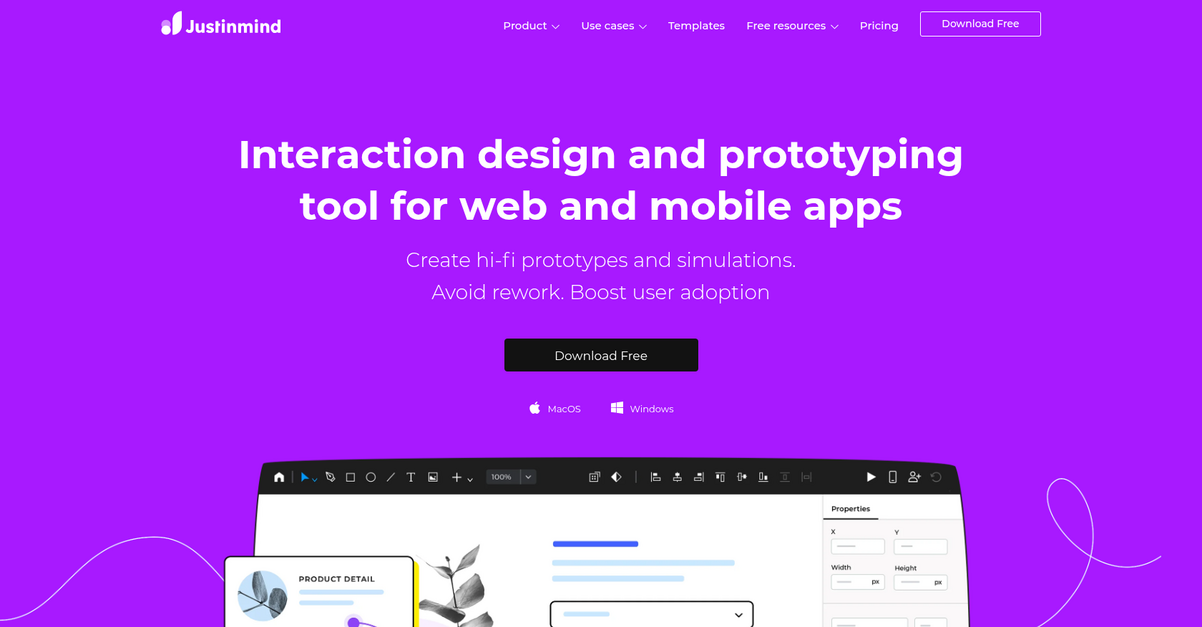
Struggling to translate abstract ideas into clear designs?
Justinmind offers comprehensive interaction and UI design tools, letting you create anything from simple wireframes to advanced, interactive prototypes. This helps bridge the gap between abstract concepts and tangible designs.
You can design full interactions for web and mobile products, including advanced interactions, animations, and transitions. This helps you create delightful user experiences from the outset.
Ready to elevate your design process?
Justinmind helps you build high-fidelity prototypes and simulations that reduce rework and boost user adoption. You can add web interactions and mobile gestures to your prototypes without writing a single line of code.
It provides a full range of tools, allowing you to focus on creating an easy-to-use product. You can visualize and test your prototypes live on any device, ensuring they truly reflect the final experience. Moreover, you can collaborate by sharing prototypes for feedback and enabling simultaneous team editing, ensuring everyone is on the same page. You can even design your UI assets for free, without project limits, using its vector design tools.
This powerful tool allows you to validate early, prototype better, and communicate faster, delivering exceptional user experiences within deadlines.
While focusing on design tools, considering all aspects of business is wise. My article on best credit management software covers financial health.
Key features:
- Create hi-fi prototypes and simulations: Build fully functional forms, data grids, and user flow diagrams, then test them instantly without any coding.
- Collaborate and share designs: Publish prototypes with a single click, invite stakeholders for early feedback, and allow multiple users to edit simultaneously.
- Maintain design consistency: Use centralized design systems to manage and share UI kits, style guides, and reusable templates across all your design teams.
Learn more about Justinmind features, pricing, & alternatives →
Verdict: Justinmind empowers you to create realistic, interactive prototypes for web and mobile apps, effectively addressing communication challenges. Its robust collaboration features and design system management make it one of the best wireframe tools for teams aiming to reduce rework and deliver high-quality, user-centric products.
6. MockFlow
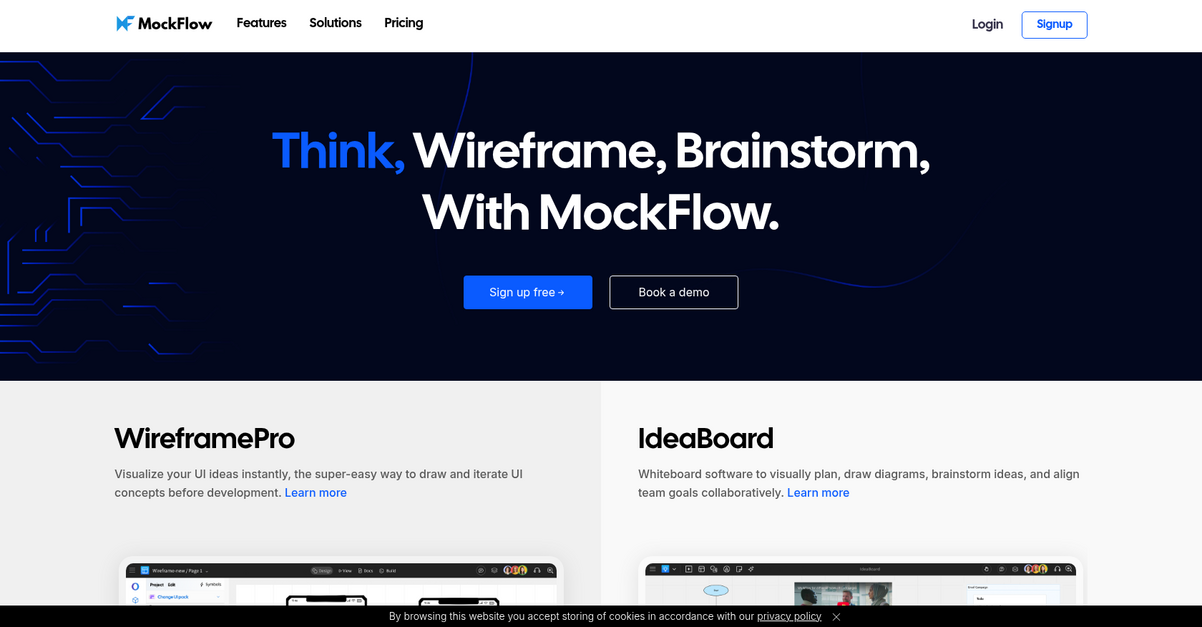
Are you struggling to communicate your UI ideas clearly?
You can easily visualize concepts with MockFlow’s WireframePro, helping you iterate faster.
This tool simplifies the process of drawing and refining user interface concepts, ensuring your designs are understood before development begins.
Think, wireframe, brainstorm, with MockFlow.
MockFlow revolutionizes your ideation process, offering a suite of tools that bridge the gap between abstract ideas and tangible designs. The WireframePro editor lets you instantly visualize UI concepts, making the creative process intuitive and efficient for everyone on your team. You can brainstorm together with real-time designing, in-place comments, video meetings, and chat, ensuring seamless collaboration no matter where your team is located. MockFlow also integrates with popular platforms like Slack, MS Teams, and Atlassian, allowing you to brainstorm right where your team already collaborates. Plus, its AI-powered features can convert screenshots or text into editable wireframes, saving you significant time.
While we’re discussing tools that optimize operations, my guide on ambulance management software offers insights for critical service providers.
Key features:
- Wireframe Editor: Visualize your UI ideas instantly with an intuitive, easy-to-use editor that simplifies the drawing and iteration of UI concepts before development begins.
- Top-notch Collaboration: Empower your team to brainstorm together using real-time designing, in-place comments, video meetings, and chat, enhancing collective creativity and alignment.
- AI-Powered Wireframing Beta: Leverage advanced AI features to convert ideas into UI concepts in minutes, or turn existing screenshots into editable wireframes, saving tons of time.
Learn more about MockFlow features, pricing, & alternatives →
Verdict: MockFlow is an outstanding choice among the best wireframe tools because its intuitive WireframePro and robust collaboration features simplify UI visualization. The AI capabilities, like converting screenshots to wireframes, drastically reduce design time, making it perfect for teams seeking to streamline their workflow and accelerate project timelines.
7. Sketch
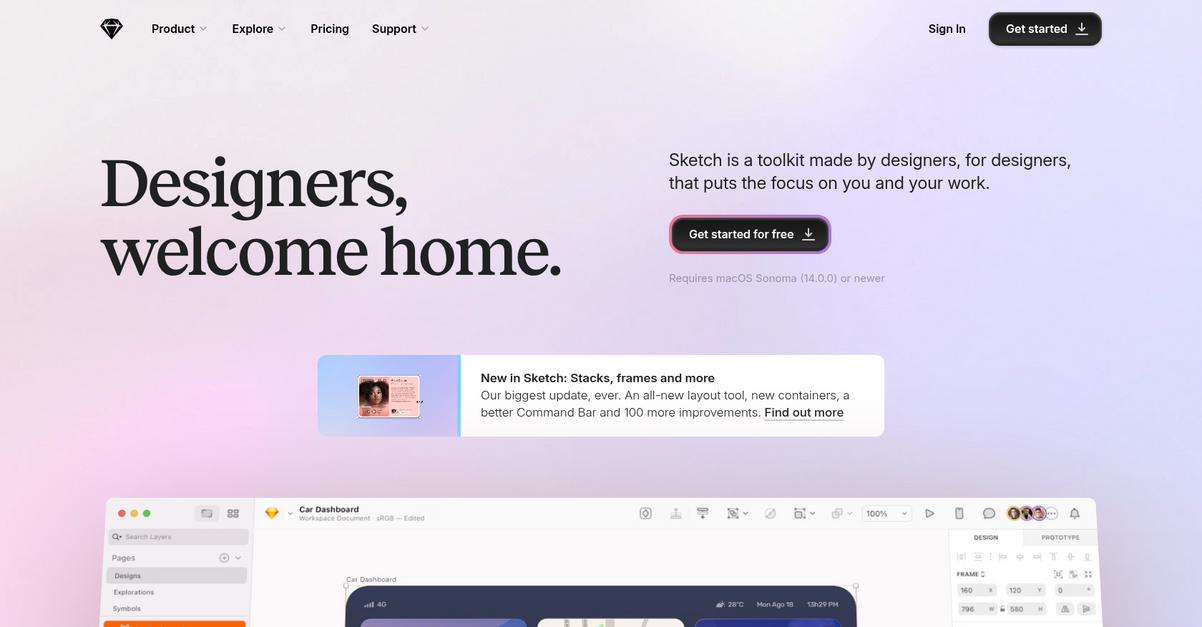
Struggling to visualize your abstract design ideas?
Sketch helps you translate concepts into tangible prototypes with focused tools and an intuitive interface designed for your workflow. It addresses the challenges of communicating visual concepts effectively, providing a vector editor like no other for building icons to entire apps.
You often waste time with inadequate tools, but Sketch simplifies your process.
Sketch helps you design without distractions, offering an infinite Canvas and an interface tailored for your ideas, not external stakeholders. Its prototyping features allow you to test ideas faster, creating realistic prototypes in very few clicks.
You can effortlessly add movement with Smart Animate and create dynamic elements like modals and scroll areas, ensuring your designs accurately convey vision. For collaboration, clients can view designs in their browser, and you can share component libraries, making teamwork smooth and integrated. You can even disconnect and design offline, working on your terms.
Before diving deeper, you might find my analysis of best API design tools helpful for your development workflow.
Key features:
- Focused Design Tools: Provides a macOS editor with an infinite Canvas and intuitive interface to help you design without distractions, prioritizing your ideas and workflow.
- Rapid Prototyping Capabilities: Enables quick creation of realistic prototypes in under ten clicks, including features like Smart Animate, Overlays, and interactive gestures for comprehensive testing.
- Seamless Collaboration & Handoff: Supports real-time co-editing, easy sharing with clients, pain-free feedback with pinned comments, and free handoff tools for developers to inspect files and export assets.
Learn more about Sketch features, pricing, & alternatives →
Verdict: If you’re a UX designer, product manager, or web developer aiming to streamline your design process and enhance team collaboration, Sketch is one of the best wireframe tools. Its powerful vector editor, rapid prototyping, and extensive collaboration features address common pain points, helping you deliver exceptional user experiences with greater efficiency.
8. Framer

Struggling to translate design ideas into tangible prototypes?
Framer offers an infinite canvas with modern layout, styling, and typography, helping you visualize concepts clearly.
You can streamline your workflow and avoid frustrating design handoffs because Framer is a true design canvas, not just an HTML editor.
See how your designs can move mountains!
Framer helps you make your designs move, without moving mountains, by enabling easy animations.
It also facilitates live collaboration on one canvas, making it ideal for team projects and gathering immediate feedback. This means you can build a CMS that fits your team, ensuring efficient content management.
Additionally, Framer supports SEO and performance, helping you build high-performing websites.
Great designs happen together.
Speaking of effective visual communication, you might find my guide on best whiteboard animation software insightful for other creative projects.
Key features:
- Design Canvas: Offers an infinite canvas with modern layout, styling, and typography features, providing a robust environment for creating detailed wireframes and prototypes.
- Live Collaboration: Enables multiple users to collaborate live on the same design canvas, simplifying feedback loops and ensuring everyone is aligned on the project vision.
- Animations & Publishing: Allows you to easily add animations to your designs and publish them globally with a single click, transforming wireframes into interactive experiences quickly.
Learn more about Framer features, pricing, & alternatives →
Verdict: Framer stands out as one of the best wireframe tools because its true design canvas, live collaboration, and animation features help teams create professional, interactive mockups and communicate their vision clearly, addressing key pain points for designers and developers alike.
9. Wireframe.cc

Struggling to translate abstract design ideas into tangible prototypes?
Wireframe.cc simplifies your workflow, helping you create elements by simply drawing a rectangle and selecting your desired stencil.
This focused approach means you avoid getting bogged down in unnecessary details early on, making iteration easier and faster. It’s a great way to manage your time.
Focus on what truly matters.
You can streamline your design process because Wireframe.cc provides essential, smarter tools. This helps you achieve the right level of detail quickly without distractions.
The simple, context-sensitive user interface ensures smart features appear when needed, then discreetly hide away, allowing you to focus on the design. Speed up your workflow further with pre-built sections, or craft layouts for web, mobile, or custom screens using versatile templates.
You can also create clickable wireframes, linking pages for simple prototypes to test user flows and gather feedback.
Key features:
- Simplified Drawing: Easily create elements by drawing rectangles and selecting stencils, allowing you to focus on core design concepts without unnecessary complexity.
- Context-Sensitive UI: Smart features appear exactly when needed, keeping the interface clean and distraction-free, which streamlines your wireframing process for efficiency.
- Clickable Prototypes: Build interactive, multi-page wireframes with linked pages, enabling you to test user flows and gather valuable feedback on your designs quickly.
Learn more about Wireframe.cc features, pricing, & alternatives →
Verdict: Wireframe.cc stands out as one of the best wireframe tools for professionals who value simplicity and efficiency. Its minimalist approach, combined with features like clickable prototypes and pre-built sections, allows you to focus on core functionality and user flow, preventing early over-investment in minor details.
10. Moqups

Struggling to communicate your design vision effectively?
Moqups provides a powerful visual collaboration solution, helping you create clear, professional wireframes and mockups for your projects.
This tool helps translate abstract ideas into tangible designs, enabling you to avoid costly revisions and project delays by getting stakeholder feedback early.
It’s time to streamline your design process.
Moqups offers a comprehensive ecosystem of tools, allowing you to seamlessly transition from diagrams and wireframes to interactive prototypes without switching applications. You can create polished flowcharts and professional wireframes for websites, apps, and dashboards, all within your browser.
Its intuitive interface ensures a fast learning curve, getting your whole team on board quickly. You can edit and annotate designs together in real-time, fostering consensus among product managers, designers, and developers. You can also drag and drop elements from extensive libraries, ensuring crisp, ready-to-use stencils for all popular use cases, including iOS, Android, and Bootstrap.
Working remotely is simple as you can work in the cloud on any device, keeping geographically dispersed teams always in sync.
It is your one-stop solution for clarity.
Key features:
- Real-time Collaboration: Work together on designs, diagrams, and prototypes, with live editing and online whiteboards to keep your cross-functional team aligned.
- Interactive Prototyping: Add interactivity to UX wireframes and mockups to simulate user experiences, enabling you to present to stakeholders and gain approval.
- Comprehensive Libraries: Access a rich collection of drag-and-drop elements, stencil kits (iOS, Android, Bootstrap), and popular icon sets like Font Awesome.
Learn more about Moqups features, pricing, & alternatives →
Verdict: Moqups provides a robust, all-in-one platform for wireframing, diagramming, and prototyping. Its real-time collaboration features and comprehensive libraries make it one of the best wireframe tools for teams seeking to unify their workflow and deliver exceptional user experiences with clarity and efficiency.
Conclusion
Ready to streamline your design workflow?
Choosing the right wireframe tool is tough. The wrong one creates confusion, stalls projects before they start, and strains client relationships.
This initial planning phase is critical for performance. According to llcbuddy.com, faster pages can achieve a 7% increase in conversion rates for each second saved. This directly impacts your bottom line, making your initial design choices incredibly important.
So, what’s my top recommendation?
From everything I’ve reviewed, Figma is the clear winner. Its unified platform directly solves collaboration issues and helps you bring your ideas to life seamlessly.
What I love is how it centralizes the entire workflow, from brainstorming in FigJam to developer handoffs with Dev Mode. Using the best wireframe tools like this keeps your team aligned.
Speaking of crucial tools for business growth, my article on best business valuation software can help accelerate your financial analysis.
I suggest you get started with Figma for free to experience this streamlined process for your own startup.
You’ll deliver better products, much faster.






